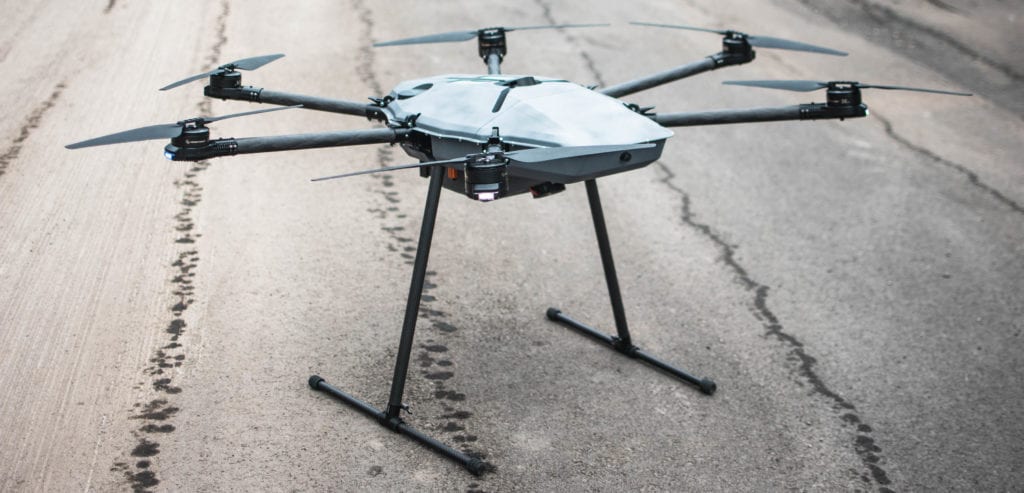
Fortem Technologies released its F700 DroneHunter: a “good drone” that works with ground-based defenses to intercept noncompliant aerial threats. (Fortem Technologies)
Fortem Technologies released a new autonomous counter-drone solution it calls the F700 DroneHunter: a drone that can be mounted with a variety of countermeaures to protect refineries, stadiums and other critical infrastructure from drone threats without any risk to civilians or property on the ground, according to the company.
The F700, with a maximum payload weight of 5 lbs, leverages an open architecture design to use tools like radar and net guns to locate, capture and tow to the ground noncompliant drones. It can tow drones weighing up to 13 lbs, but can also use a parachute to bring itself and an enemy drone to predetermined safe landing zones on the ground.
“Targeting decisions are handled through software AI, but still require some human intervention,” a representative for Fortem told Avionics International. “The DroneHunter is designed to be 100 percent autonomous, although currently, a person must authorize the DroneHunter to fire on another drone.”

The undercarriage of the F700, which can be outfitted with a variety of counter-UAS tools. (Fortem Technologies)
The F700 is meant to complement Fortem’s SkyDome and TrueView technologies, which offer a scalable, radar-based way to monitor the airspace around a facility in 3D. Communicating with the ground-based radar system, the F700 can provide coordinates of an enemy drone to ground-based defensive weapons, such as directed energy systems or RF jammers, or the reverse. In the future, the F700 and other ‘drone-hunters’ may be equipped with directed energy weapons, but current systems are “rather large and bulky” for a high-performance drone, according to Fortem.
In February, Fortem won a contract with the Department of Defense to provide its multi-layered drone security solution, including the F700, for “various military operations.”
“Fortem has sold F700 to international government agencies who have deployed the solution for international events,” a representative for the company said. “At large, F700 will be used to protect the airspace over critical infrastructure, such as oil refineries and nuclear power plants, as well as stadiums, campuses, venues, hospitals and entire cities. F700 has gone through more than 700 test runs to date.”